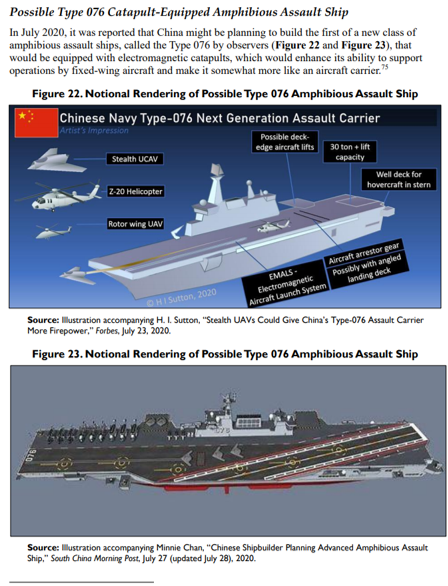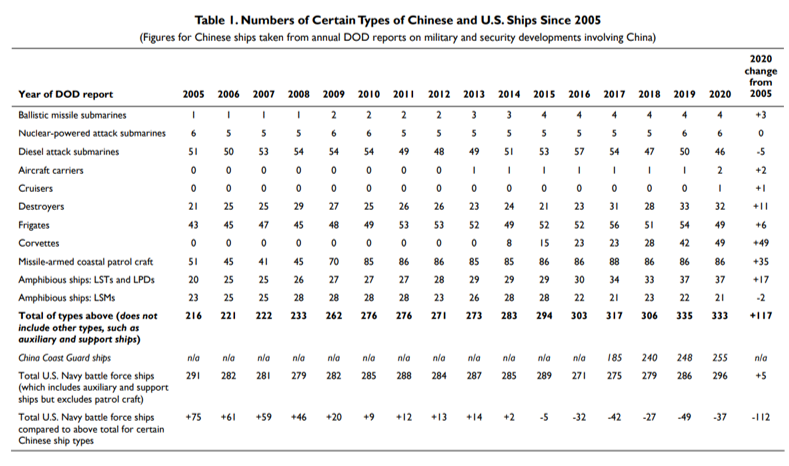Congressional Research Service Published Updated Report on Chinese Navy Modernization
On March 9th, the Congressional Research Service published an updated version of its report on Chinese naval modernization. Competition with China is increasingly becoming a central focus of not just policymakers but also the American (and allied) public, which increasingly views China unfavorably. According to an October Gallup poll, 73% of Americans, 71% of Germans and 75% of South Koreans have a negative view of China. Moreover, a more recent study released this month indicates that 89% of Americans now view China as an enemy or competitor rather than a partner. This is reflected by a growing amount of Congressional Research Service reports being concerned with military and geostrategic competition with China.

The report was largely compiled based off unclassified intelligence released by the Department of Defense, Defense Intelligence Agency and the Office of Naval Intelligence. The report concerns not just “pure” naval modernization but also non-naval modernization relevant to naval operations, such as land-based anti-ship missiles.
So what were the key findings of the report?
- China’s Navy (PLAN) has already become a formidable opponent in near waters and is rapidly expanding its capability to operate far from home. Many of its weapon systems are technologically comparable to those fielded by the US.
- China’s Battle Force of 360 ships is expected to grow to 425 by the end of the decade.
- For the first time since the Cold War, the ability of the US Navy to operate in the Western Pacific is in question.
- “China’s naval modernization effort encompasses a wide array of platform and weapon acquisition programs, including anti-ship ballistic missiles (ASBMs), anti-ship cruise missiles (ASCMs), submarines, surface ships, aircraft, unmanned vehicles (UVs), and supporting C4ISR (command and control, communications, computers, intelligence, surveillance, and reconnaissance) systems. China’s naval modernization effort also includes improvements in maintenance and logistics, doctrine, personnel quality, education and training, and exercises.”
- The PLAN’s development is currently focused on expanding China’s military options against Taiwan (including anti-access/area-denial (A2/AD) capabilities against the US Navy), in near waters and its ability to protect commercial routes running from the Persian Gulf.
- In recent years, China’s main naval focus has been on quality over quantity.
- The PLAN currently has a number of key weaknesses including “joint operations with other parts of China’s military, antisubmarine warfare (ASW), long-range targeting, a limited capacity for carrying out at-sea resupply of combatant ships operating far from home waters, a need to train large numbers of personnel to crew its new ships, and a lack of recent combat experience”.
- The growing Coast Guard, an auxiliary of the PLAN, is also a key concern.

The full report goes into much more detail, considering not only overall PLAN capability but also that of individual ships and weapons systems. The full report is available here.

